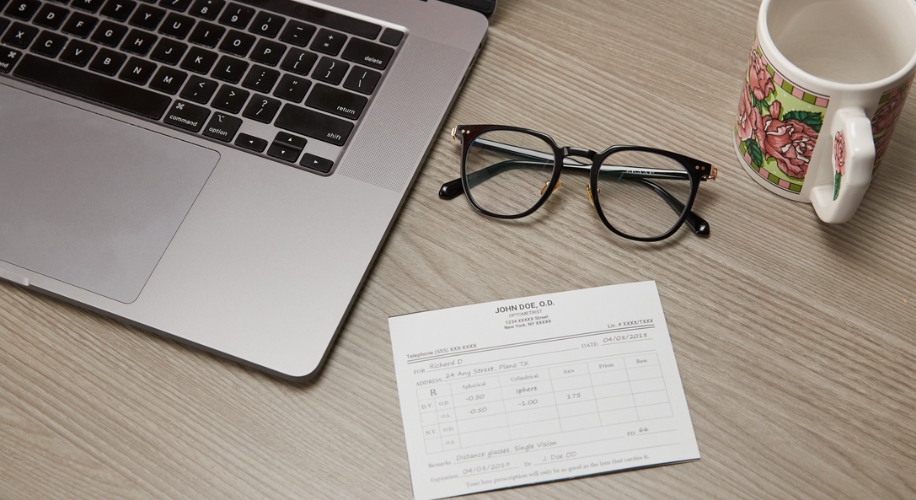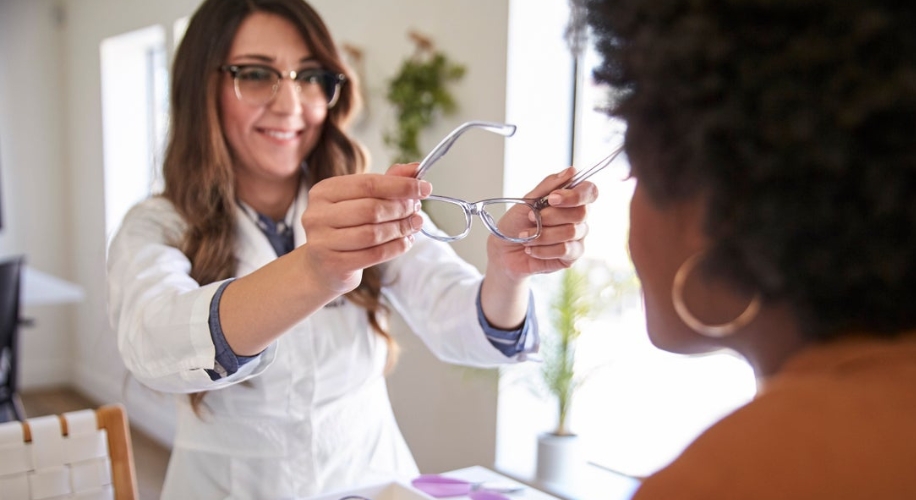Bifocals vs. Progressive Lenses

Choosing between bifocals and progressive lenses can be a pivotal decision in your vision correction journey. If you’ve been juggling multiple pairs of glasses for different tasks, these multifocal solutions offer convenience and improved visual acuity. Let’s explore the distinct benefits of each to help you make an informed decision that aligns with your lifestyle needs.

Bifocals: A Clear Cut Between Distances
Bifocals have been a trusted choice for correcting vision at two different distances since the days of Benjamin Franklin. They feature a distinct line that separates the two prescription areas within the lens:
- The upper portion is typically for distance vision, allowing you to see objects that are far away.
- The lower segment, known as the “reading” area, assists with near vision tasks like reading or sewing.
While bifocals are highly effective, it’s important to note that they do require some adjustment. You may need to learn how to tilt your head rather than just move your eyes to see clearly at different ranges. However, many find the transition seamless and appreciate the clear demarcation for different visual fields.

Progressive Lenses: A Smooth Transition
Progressive lenses, also known as “no-line bifocals,” offer a gradient of vision correction from the top of the lens to the bottom, without any visible lines. This design provides several benefits:
- A smoother transition from distance to close-up vision, with the addition of a middle range for tasks like computer work.
- They mimic natural vision more closely, allowing for a more comfortable and intuitive adjustment period.
- Progressives eliminate the sudden “jump” in focus associated with traditional bifocals, providing a more aesthetic and youthful appearance.
As progressive lenses offer a range of vision correction that includes distance, intermediate, and near areas, there’s a period of acclimation. Learning to look through the correct part of the lens for different tasks might feel awkward initially, but most users adapt quickly with practice.

Finding Your Perfect Fit
Selecting between bifocals and progressives often comes down to personal preference and lifestyle considerations. Here’s what to keep in mind:
- Comfort: If you frequently switch between various visual tasks, progressives may provide more natural ease of use.
- Clarity: If you prefer a clear boundary between prescription powers, bifocals could be the better choice.
- Aesthetics: For a line-free look, progressives offer a seamless and modern appearance.
- Cost: While progressives are typically more expensive due to their complex design, many find the investment worthwhile for the added convenience and functionality.
At Zenni Optical, we understand that choosing the right pair of glasses is a personal decision that impacts your daily life. We’re here to guide you through every step of the process, from selecting the perfect frame to understanding your prescription needs. Whether you’re considering bifocals or progressive lenses, we’re committed to providing affordable, high-quality eyewear options tailored to your unique lifestyle.
Embrace the freedom and clarity that come with finding the optimal lens type for your vision. Our team of experts is ready to assist you in renewing your prescription online, exploring the different parts of eyeglasses, and answering any queries you may have. Let’s ensure your eyewear not only corrects your vision but also reflects your personal style and needs.
About the Author: Dr. Sophia Moh, OD, ABOC
Dr. Sophia Moh, OD, is an optometrist based in the Bay Area, California. She holds a doctorate from UC Berkeley School of Optometry and has worked in various eye care settings, including primary care optometry, general ophthalmology, community health clinics, and Veterans Affairs. Dr. Moh is dedicated to improving global vision health by making high-quality, affordable eyewear accessible to all. She is also a certified American Board Optician (ABO) and actively contributes to optical education through training and lectures.


 Canada
Canada